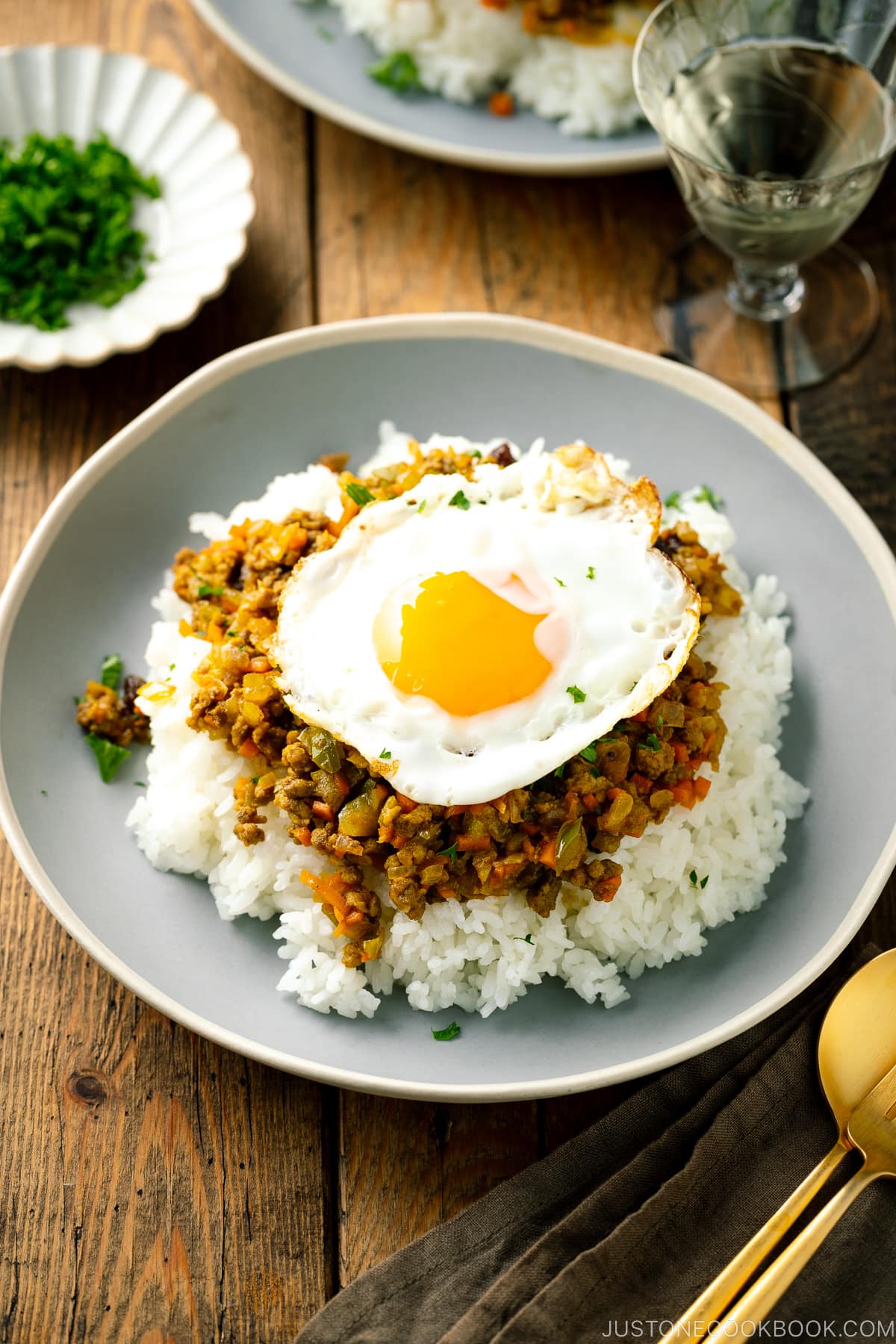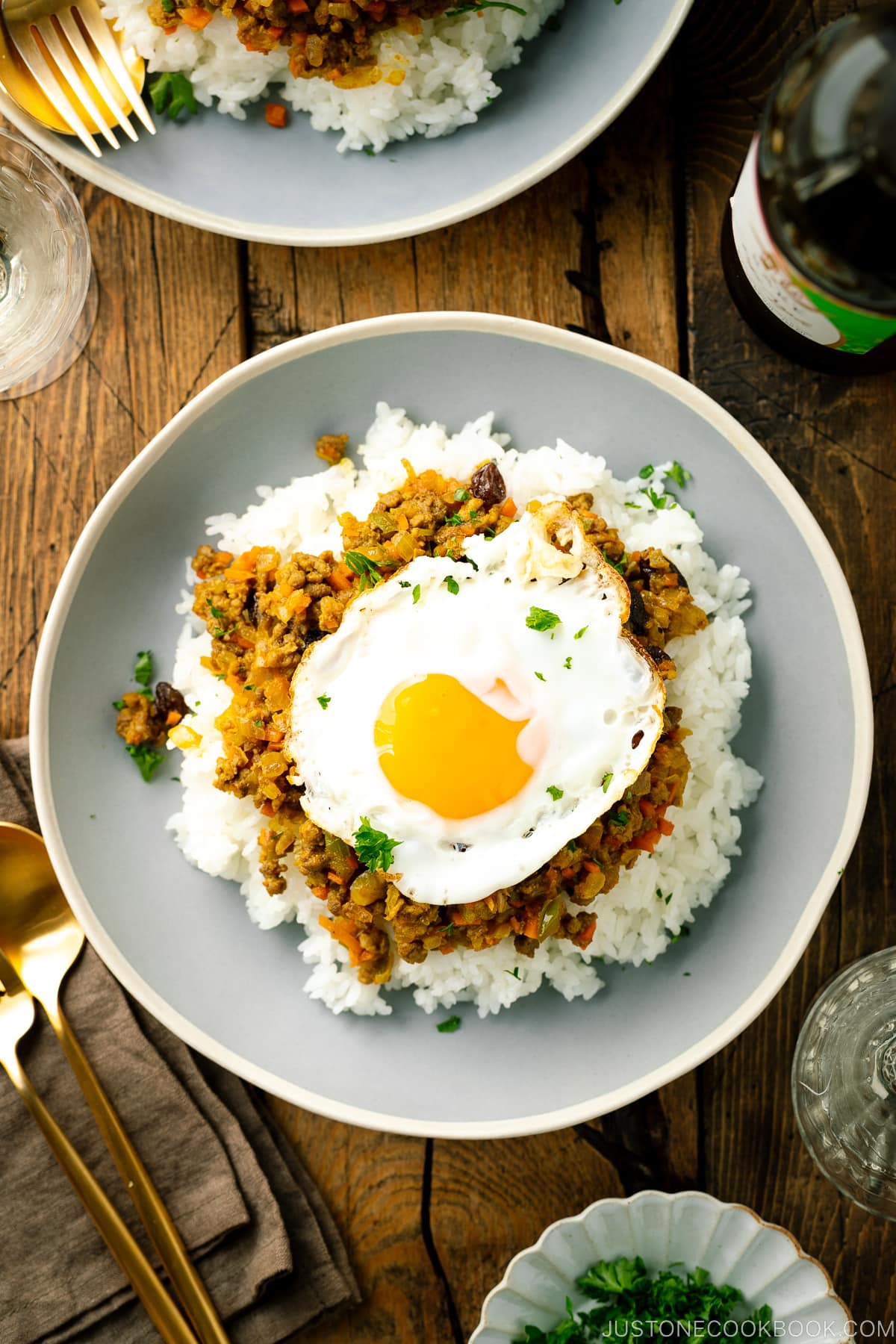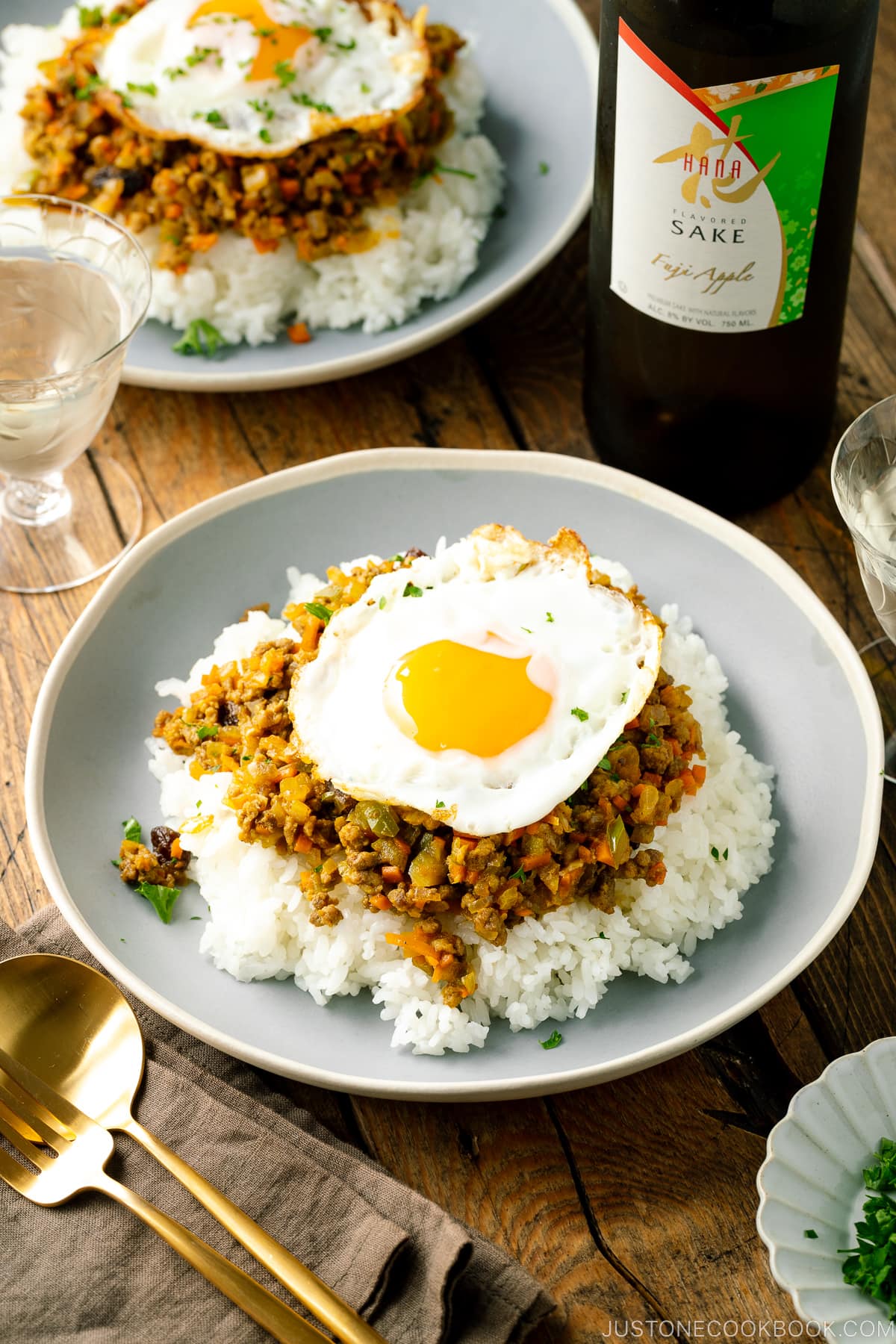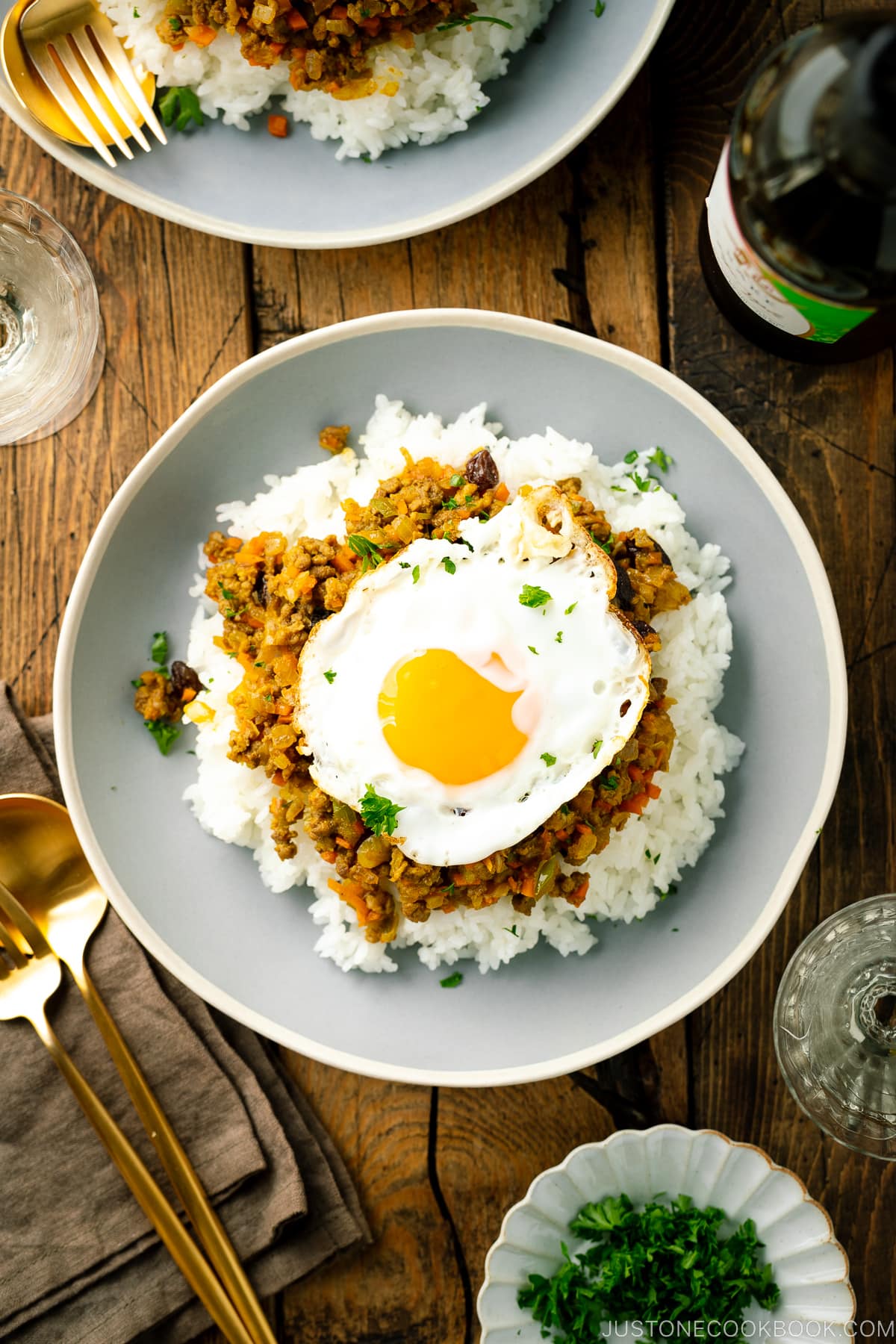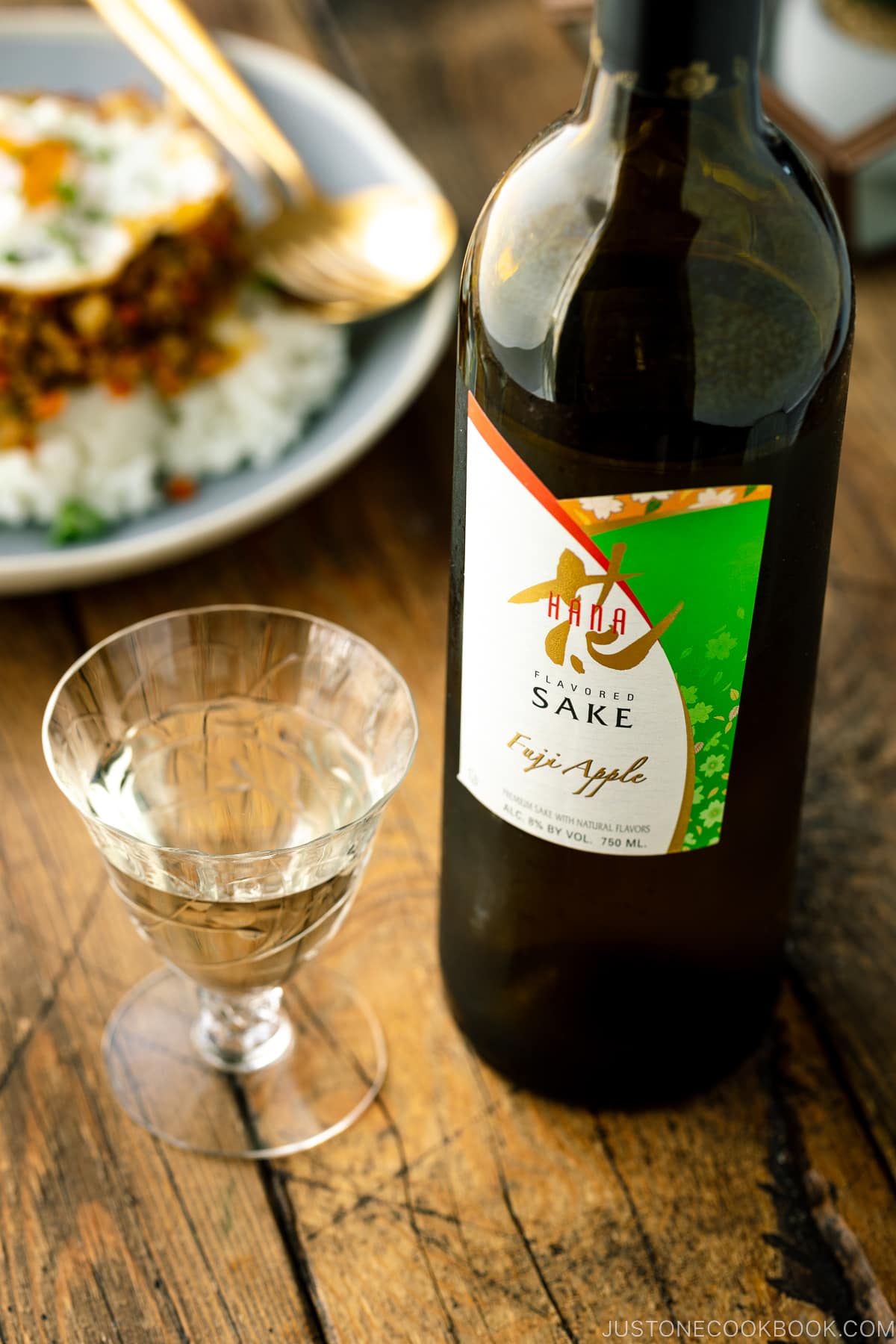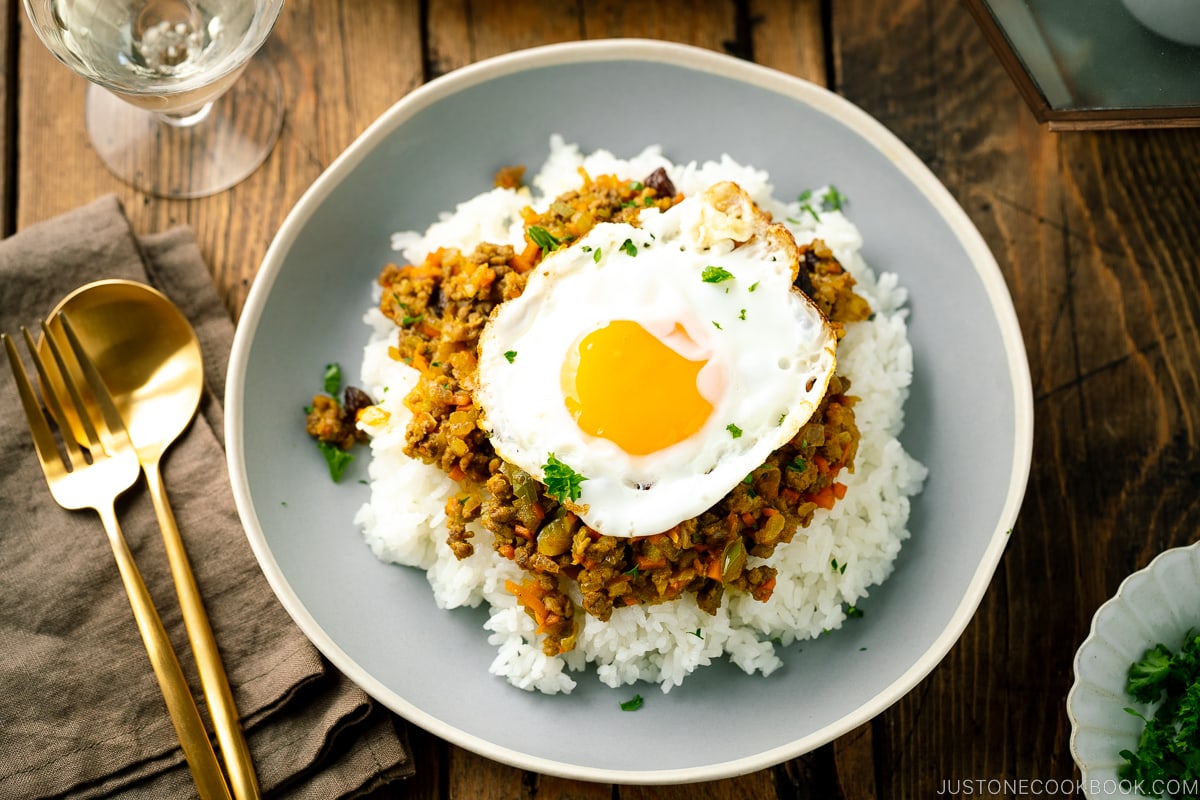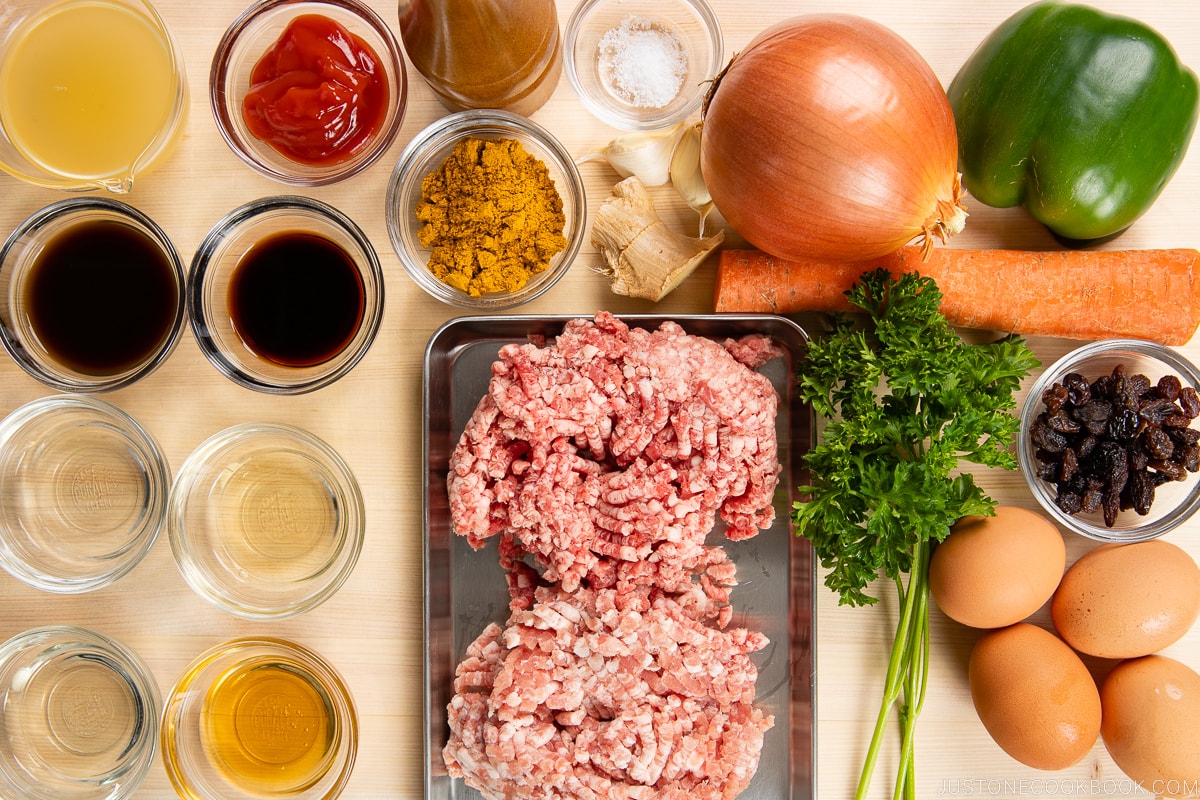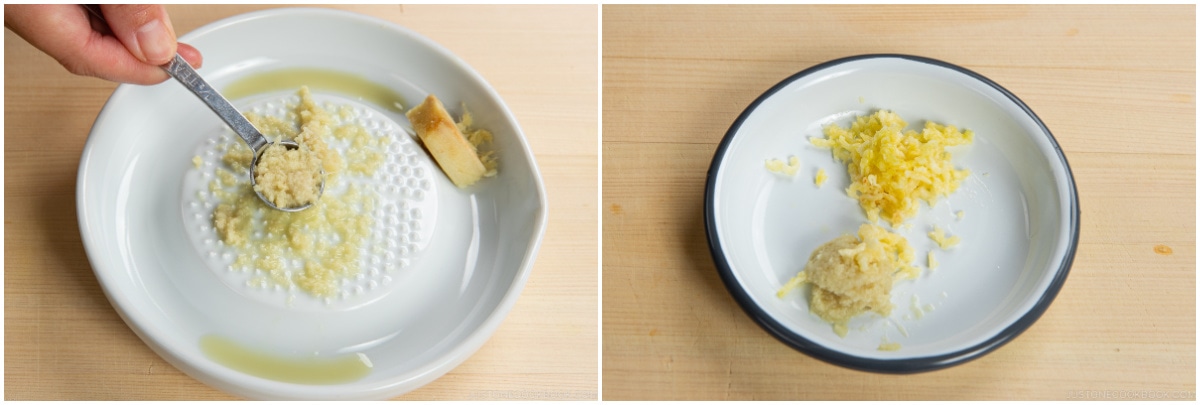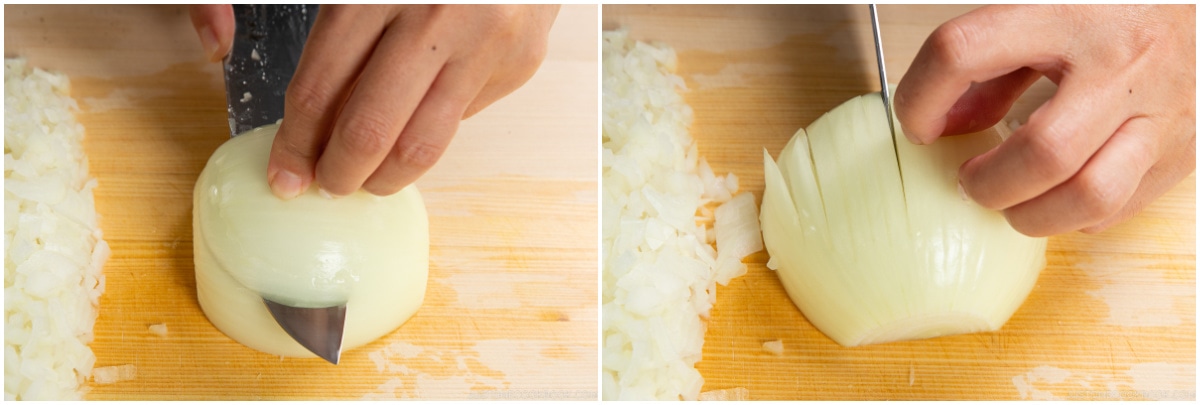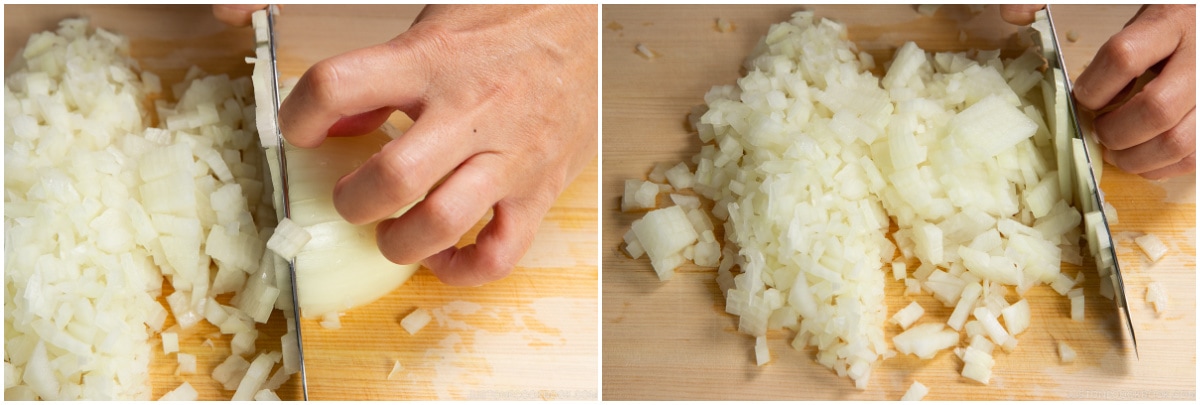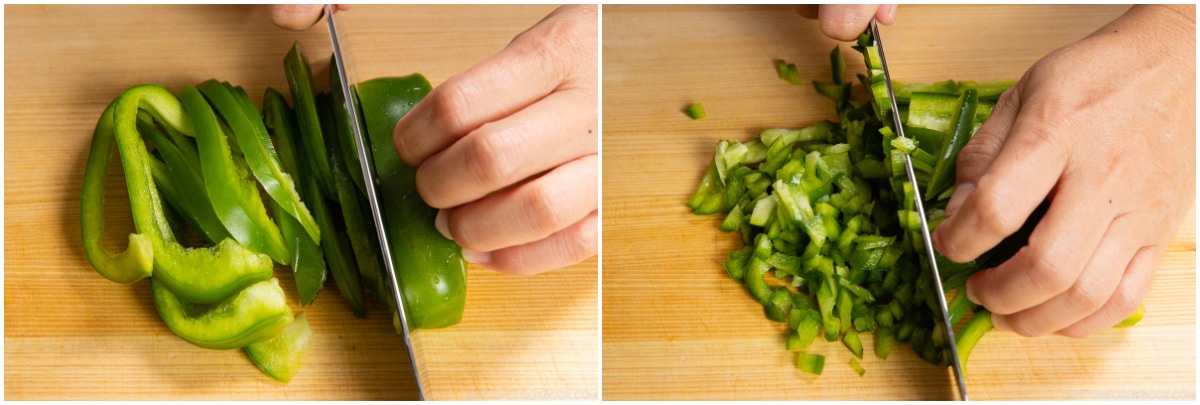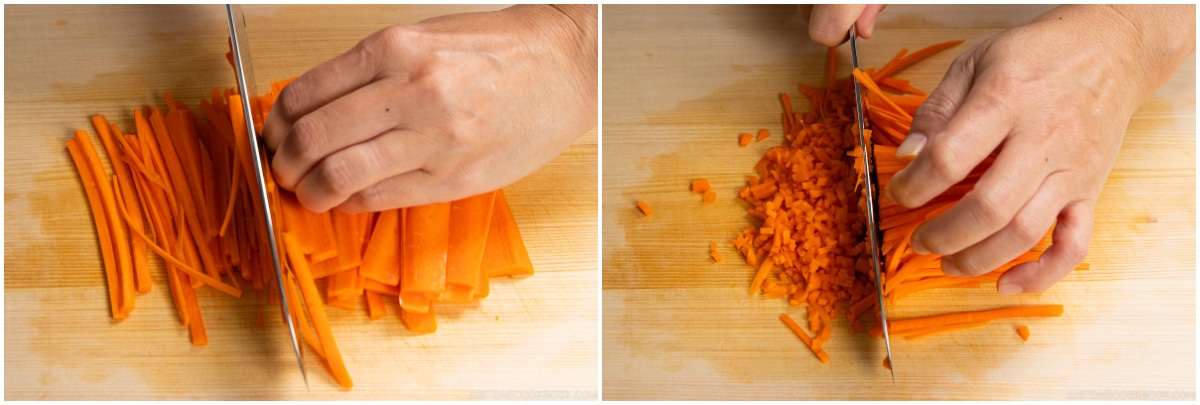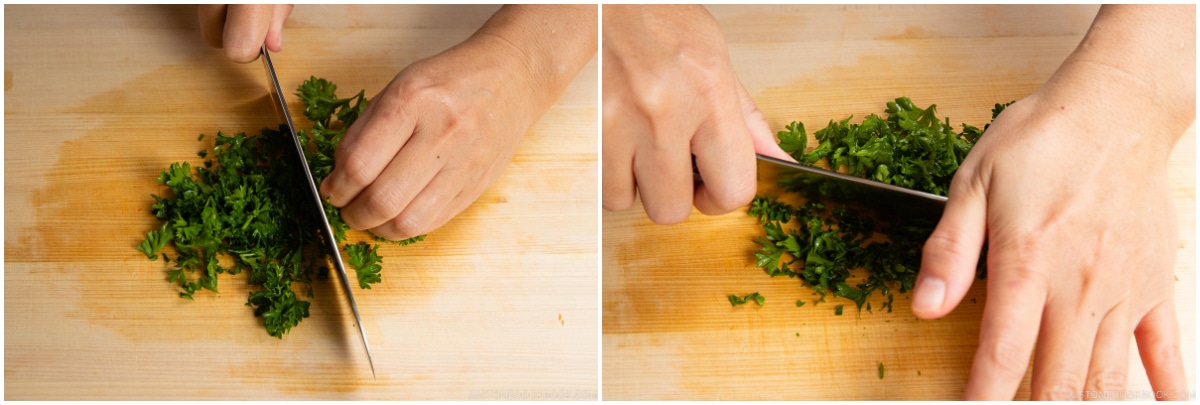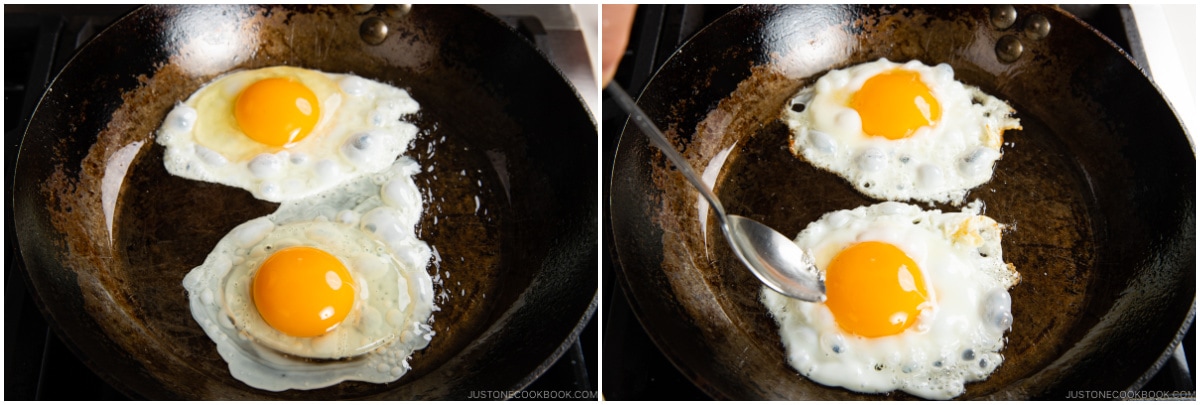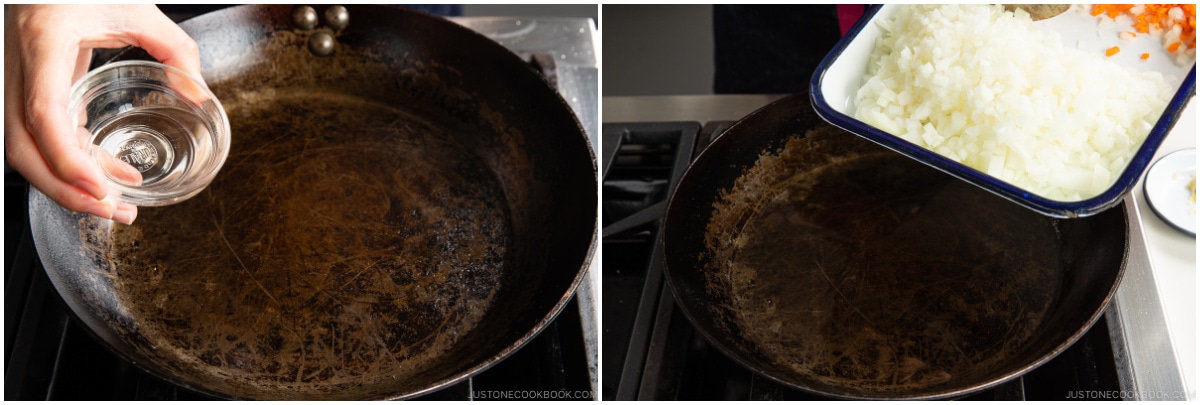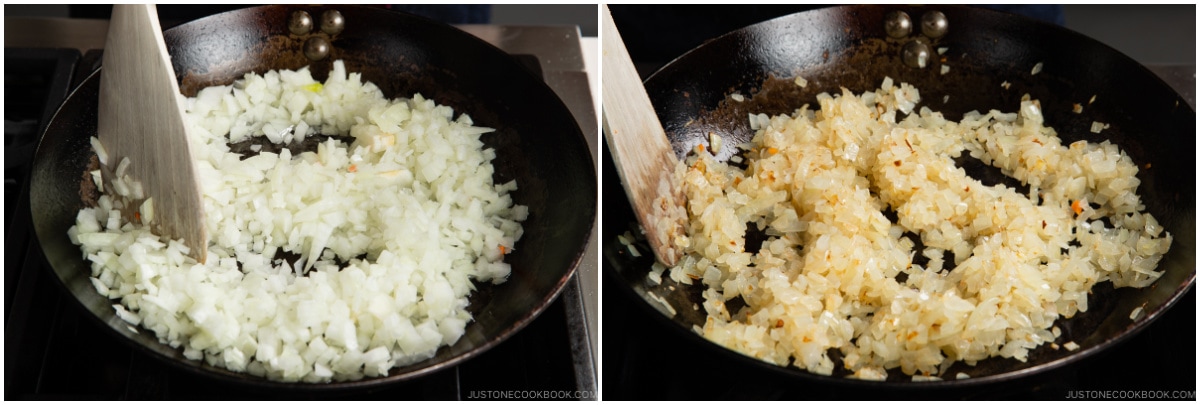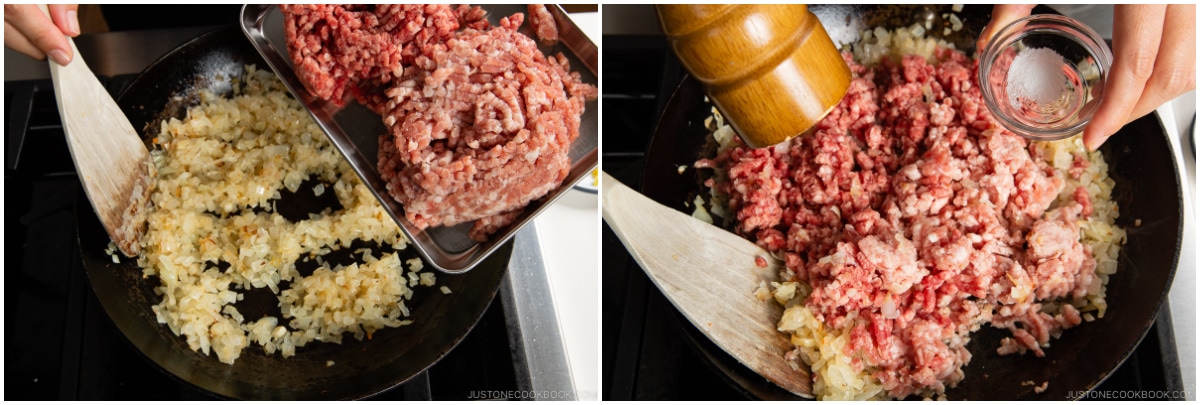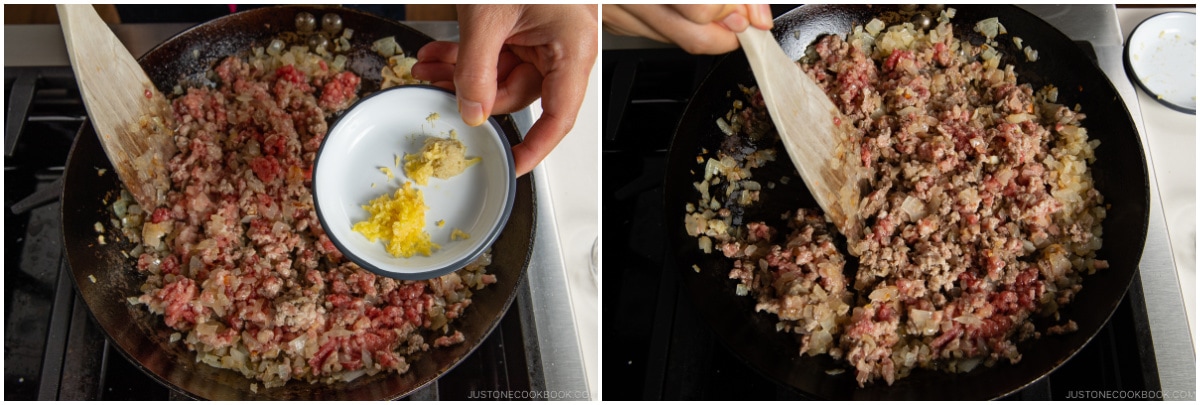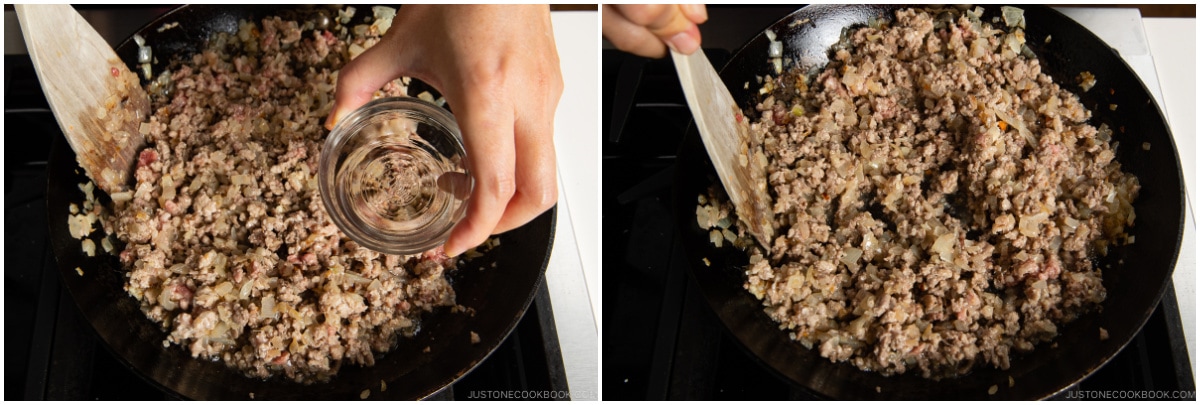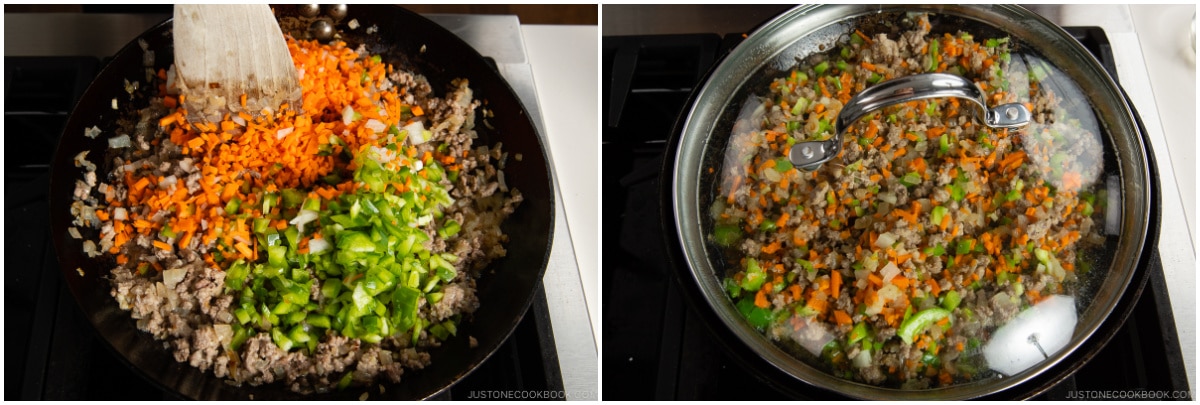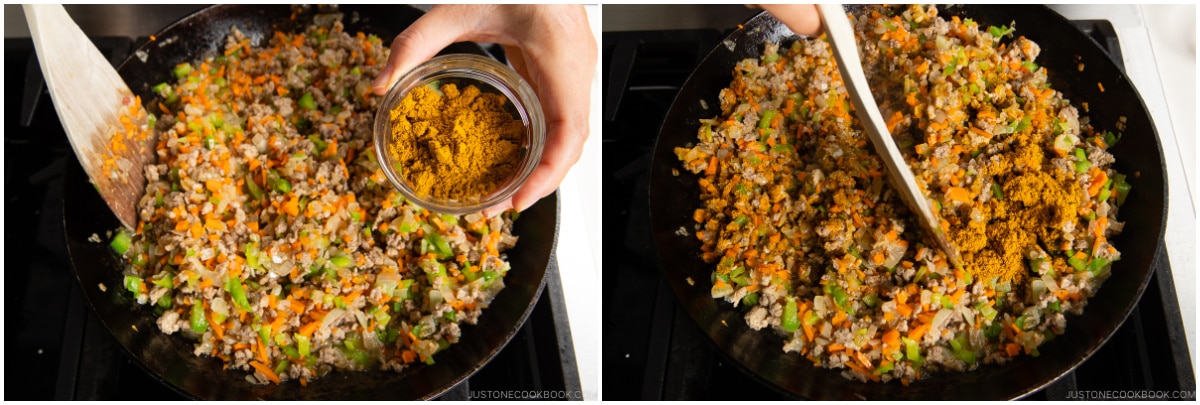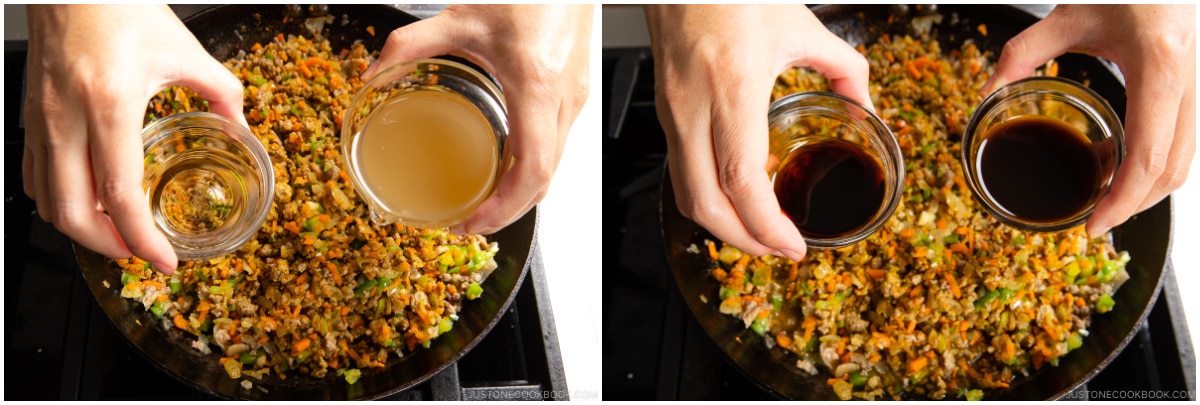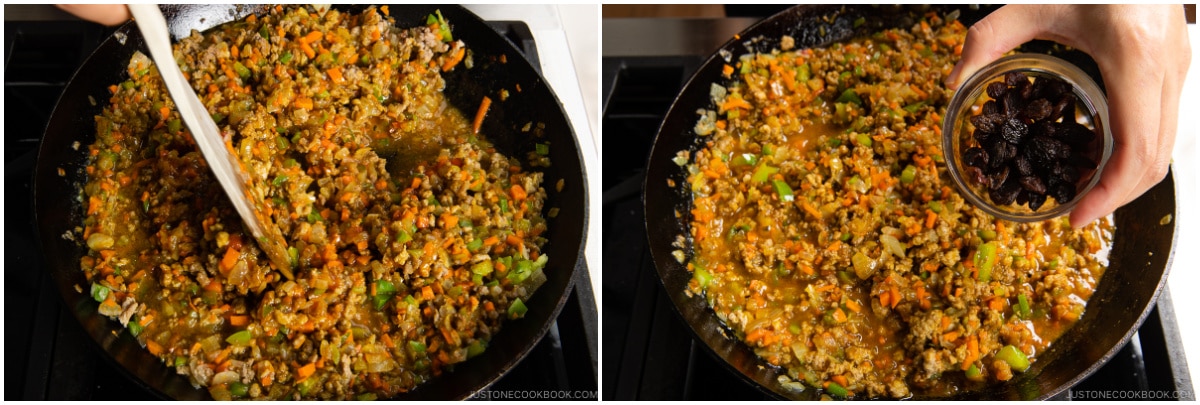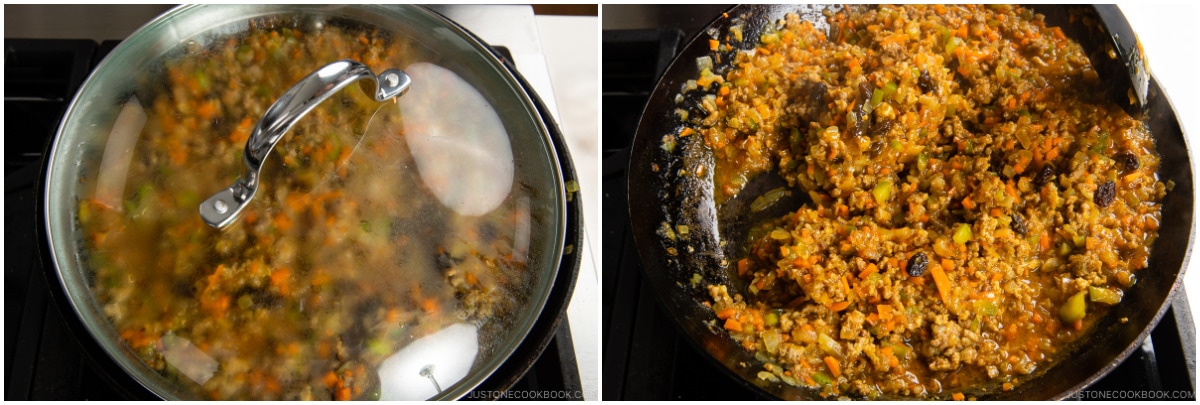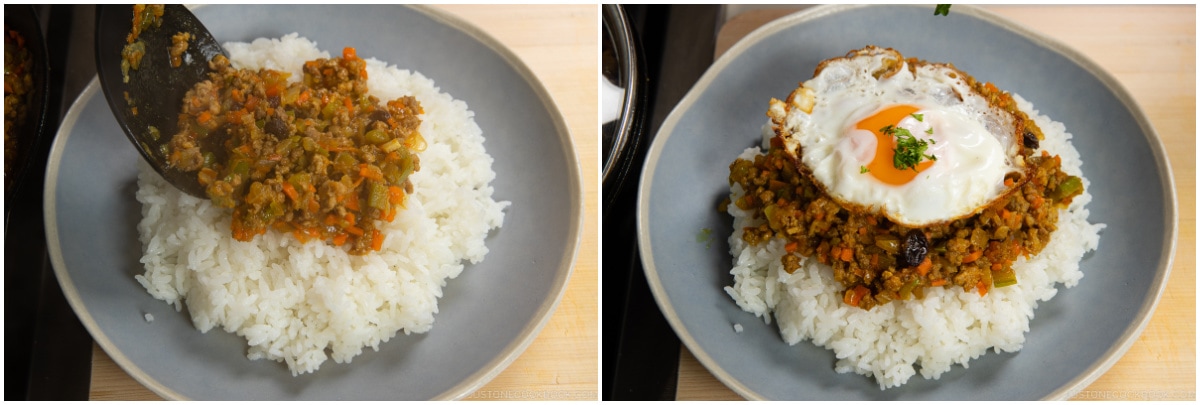Japanese curry has a solid reputation in today’s world of curries, but have you heard or tried Dry Curry (ドライカレー)? As the name suggests, it does not have any gravy and is made with ground meat and finely diced vegetables. It was my favorite curry to make when I first started cooking for myself back in my college days! Today, I consider it my go-to on busy weeknights. Not only does the curry come together so quickly, it is packed with comfort and has a lot of vegetables in it. You can make a big pot for freezing or just one serving if you’re cooking for yourself. Does it sound like a curry you’re interested in? I hope you love this dry curry as much as I do!
What is Japanese Dry Curry
Dry Curry is a type of curry that is made with ground pork or beef (or both) and minced vegetables that are seasoned with curry powder, Worcestershire sauce, and ketchup. Unlike a typical Japanese curry, this dish does not contain sauce or thick gravy; therefore, the curry-flavored minced ingredients are served over a bed of steamed rice and often topped with a fried egg or sliced boiled egg. It’s a very common home-cooked meal in Japan so you will see many variations. I love tossing in some raisins because they add just enough sweetness and balance out the gentle spiciness of the curry. When it comes to vegetables, the dry curry offers plenty of room for flexibility. You can chop up any leftover veggies you can find in the fridge. Some people add tomatoes, eggplants, zucchini, and more.
How to Make Japanese Dry Curry
Ingredients You’ll Need
Ground pork/beef – You can use any type of ground meat. Onion Green bell pepper Carrot Raisins (optional) – It’s really nice to add a touch of fruity sweetness to the savory curry. Aromatics: ginger and garlic Condiments: salt, pepper, Japanese-style curry powder, sake, chicken stock, mirin, Worcestershire sauce, soy sauce, ketchup, honey Toppings: parsley and eggs
Overview: Cooking Steps
Japanese Dry Curry Cooking Tips
Use both ground beef and pork. In Japanese cooking, it’s common to use the ground beef and pork combination called Aibiki-niku (合い挽き肉). It gives a more complex flavor, texture, and taste. A good beef-to-pork ratio is 2 to 1 (8 oz/4 oz) or 3 to 1 (9 oz/3 oz). Use Japanese curry powder. I recommend the S&B brand curry powder if you wish to make this dish as authentic as possible. You can use packaged curry powder from an Indian grocery store, but the blend can taste drastically different from Japanese-style curry powder. Chop the vegetables into uniform sizes. It definitely looks better when the ingredients are in similar sizes and shapes, but it also gives a better bite to the overall texture. Measure the seasonings (condiments) prior to cooking. If you don’t measure the condiments ahead of time, the cooking liquid will evaporate while you add condiments one at a time. You will need to quickly add the condiments all at once, close the lid, and let it simmer. Use a lid for the frying pan. Dry curry is not a soupy, saucy, or gravy-like curry so you won’t be cooking ingredients with broth. We use a small amount of chicken broth and the moisture released from the vegetables to cook the mixture. Therefore, it’s important to utilize a lid to cook the vegetables while steaming. Without it, the moisture will escape and it will require more broth or a longer time to cook the ingredients. Dry curry does not require broth, but I use a small amount of chicken broth to add savoriness.
Freeze Extra Dry Curry for Next Meal
Japanese dry curry stores well in the refrigerator for up to 3-4 days and it’s also freezer-friendly, so feel free to make a big batch. I usually divide the leftovers into a one-serving glass container. I recommend using a glass container as the curry can stain the plastic container and you can microwave it directly. If you freeze cooked rice as I do, defrost the rice and dry curry for a quick instant homemade meal!
Sake Pairing with HANA Fuji Apple Flavored Sake
For this dry curry recipe, we paired it with Takara Sake’s HANA Fuji Apple Flavored Sake. You may think it’s odd to pair curry with apples, but it’s surprisingly common. I often grate apples into my curry to balance out the spices and even House Food’s Vermont Curry includes apples in their boxed roux. I tend to love sweet drinks and I have to say this sake is one of my favorites! The sake has a bright fuji apple aroma and it’s delicate on the nose. As you sip it, the texture of the sake is creamy and rich, contrasting well with the dry curry. The apple-flavor tastes authentic, and it is really delicious with a clean finish. Also, the alcohol in HANA Fuji Apple Flavored Sake is 8% so it’s more similar to beer than a standard sake (15%). An excellent choice for those who don’t like the taste of alcohol. Its low alcohol makes it a fine aperitif, either straight up or on the rocks. Our dry curry meal was a simple dinner, but serving it with the fruity sake really elevated the enjoyment with a taste of fall to the table.
What to Serve with Japanese Dry Curry
Looking to add a few other dishes to make it a more elaborate dinner? Here are some great sides to pair it with:
Asian Coleslaw Shrimp Egg Rolls Heirloom Tomato Salad Spinach Salad with Sesame Dressing (Gomaae) Vegetable Miso Soup Japanese Pickled Cucumbers
Wish to learn more about Japanese cooking? Sign up for our free newsletter to receive cooking tips & recipe updates! And stay in touch with me on Facebook, Pinterest, YouTube, and Instagram.
